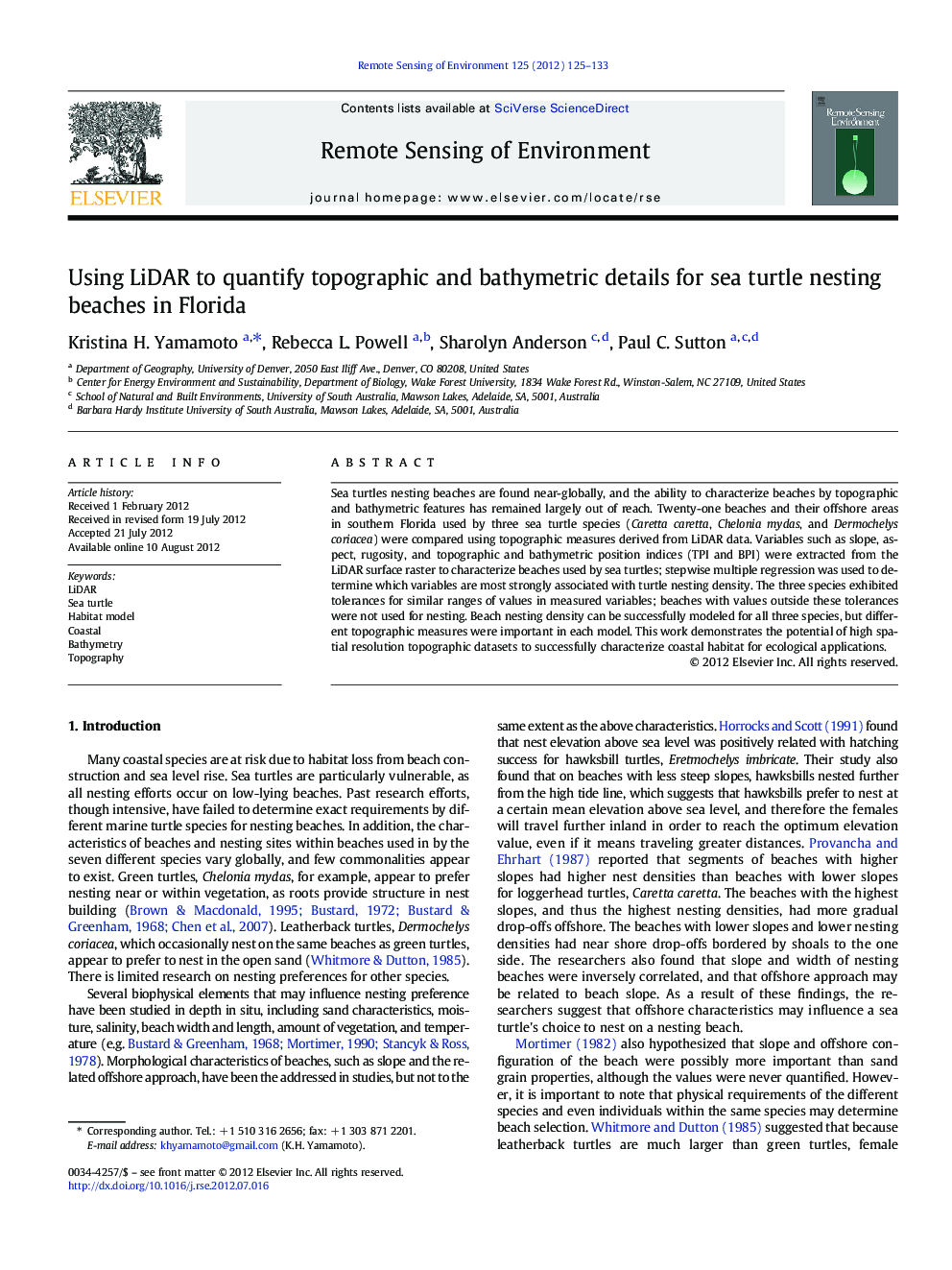| Article ID | Journal | Published Year | Pages | File Type |
|---|---|---|---|---|
| 4459125 | Remote Sensing of Environment | 2012 | 9 Pages |
Sea turtles nesting beaches are found near-globally, and the ability to characterize beaches by topographic and bathymetric features has remained largely out of reach. Twenty-one beaches and their offshore areas in southern Florida used by three sea turtle species (Caretta caretta, Chelonia mydas, and Dermochelys coriacea) were compared using topographic measures derived from LiDAR data. Variables such as slope, aspect, rugosity, and topographic and bathymetric position indices (TPI and BPI) were extracted from the LiDAR surface raster to characterize beaches used by sea turtles; stepwise multiple regression was used to determine which variables are most strongly associated with turtle nesting density. The three species exhibited tolerances for similar ranges of values in measured variables; beaches with values outside these tolerances were not used for nesting. Beach nesting density can be successfully modeled for all three species, but different topographic measures were important in each model. This work demonstrates the potential of high spatial resolution topographic datasets to successfully characterize coastal habitat for ecological applications.
► LiDAR data were used to characterize nesting beaches for sea turtles in Florida. ► Topographical details successfully modeled nesting density for each species. ► Nesting criteria derived from the LiDAR data highlighted species’ tolerances.
